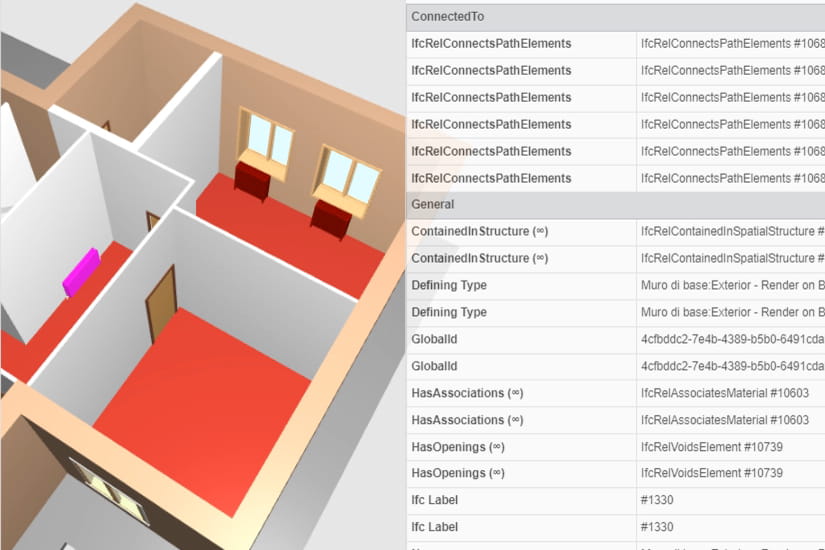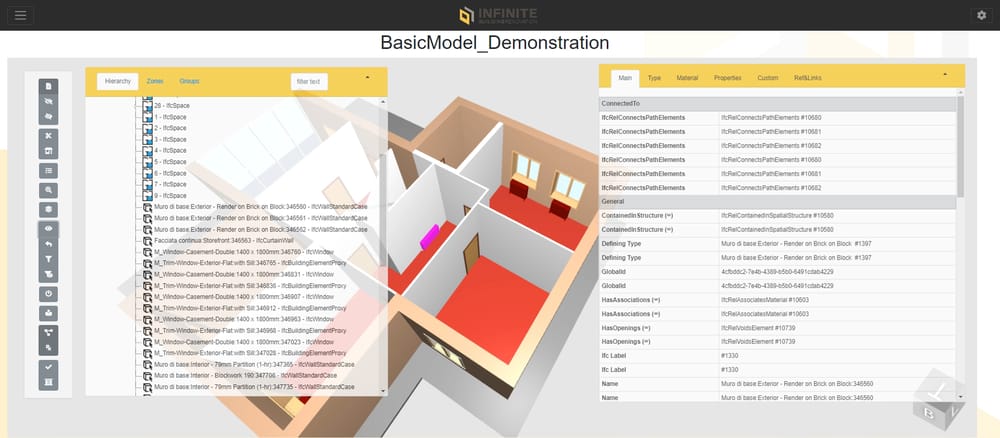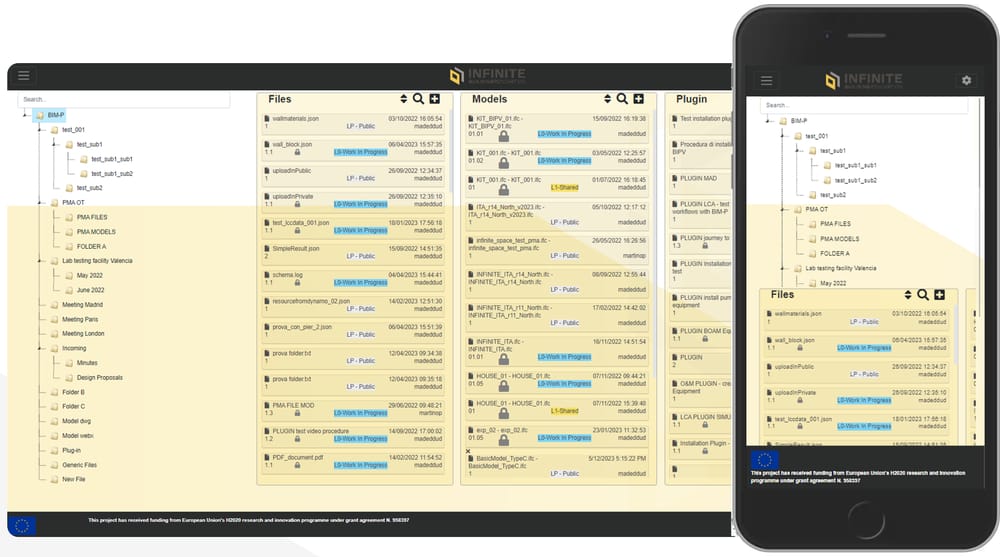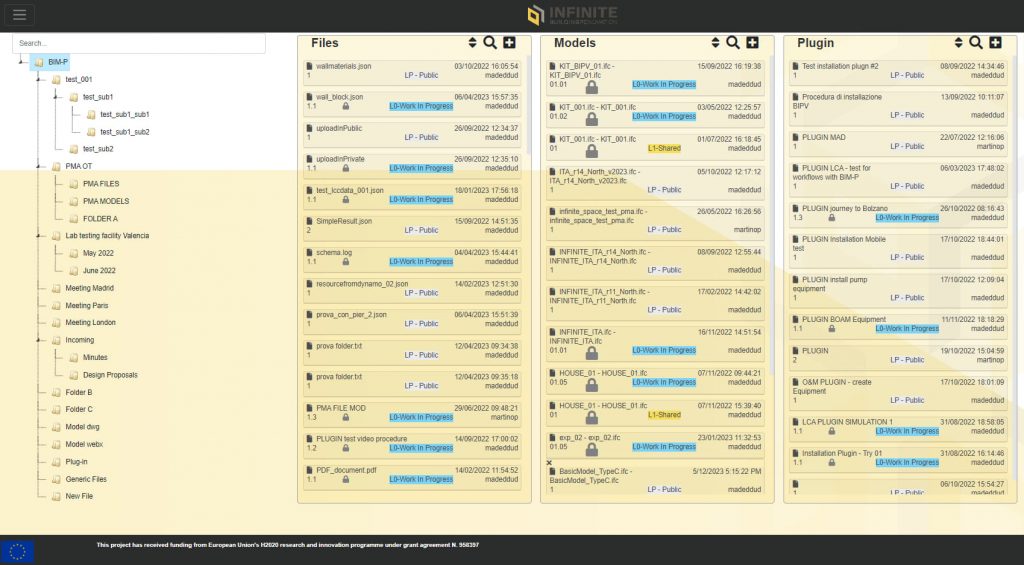BIM-P: the platform revolutionising access to building data

Authors: Davide Madeddu, One Team srl
Building quality relies on the collaboration among specialists, owners, and contractors. Effective communication among these parties is key, as several studies have shown that a poor information exchange and difficulty in data interoperability can lead to implementation errors and poor quality , delays in the delivery of the building, and unexpected cost increases.
INFINITE BIM-P platform addresses this challenge by providing a a document management environment that assists engineers and architects in collecting, managing, and disseminating all project information across multidisciplinary teams.
BIM-P’s main features
The platform allows the storage of documents regardless of their format and original software, including models, drawings, documentation, specifications, contracts, schedules, videos, and photographs. Documents can be organized by type, origin, and content, thanks to customizable classifications and tags when files are uploaded to the platform.
Access to information is controlled and managed with permissions, activity tracking systems, and approval processes for information flow control. Project teams can exchange information efficiently and collaboratively using a shared workspace for the entire project while limiting access to sensitive data.
The platform also supports document revisions: documents can be edited and managed through a revision control system that keeps track of changes and document versions over time. The document management process is also compliant with recent BIM standards such as ISO 19650 and implements document revisions, classifications, and work statuses.
It is also possible to create links between documents, 3D models, and geometric elements, defining semantic relationships between document contents, such as a 3D model and its drawings, quantity takeoffs, and model elements, or a system and its technical data sheets.
Information exchange with other organizations is facilitated through an approval process that ensures all teams are working on documents that have been fully reviewed and approved by the team’s owner. The tracking of activities on documents allows everyone to see which changes have been made, when, and by whom.

3D models and IFC format
The platform supports the upload of 3D models in several formats. Models, included those in the IFC format, can be viewed in the integrated viewer, which allows navigation through models, selection of 3D objects, viewing properties and hierarchy, isolating, hiding, and highlighting elements.
When uploaded, the IFC model is processed, and individual elements, classes, and properties are saved in the platform’s database. This functionality allows to read, edit and add elements and properties to the model, which is useful in design, analysis, and simulation activities. This model management mode is particularly useful in defining groups of elements, spaces, and zones, typically used in quantification, energy analysis, construction management, and facility management. For example, it is possible to include information derived from energy analysis results, cost analysis, life cycle analysis, and more.
All functions are also available through an open API interface, which permits the integration of external applications with the tools for document and IFC model data management. The platform currently integrates plugins developed during the INFINITE project for energy analysis, cost analysis, life cycle analysis, maintenance, and installation. Finally, document and model management directly from the Autodesk Revit design environment is possible, thanks to the integrated library for Autodesk Dynamo for Revit.
The platform is accessible from mobile devices directly from the browser without needing any additional iOS or Android applications. The interfaces and functionalities are consistent across mobile devices, tablets, or laptops.

Why should architects and engineers use the BIM-P platform?
Ten reasons why professionals of the construction industry should adopt the BM-P platform.
- Shared workspace: the platform’s shared workspace ensures that multidisciplinary teams of architects and engineers can work together effectively, enhancing overall project quality.
- All documents in one place: the platform is the only environment needed to collect, manage, and disseminate all project information, including models, drawings, specifications, and documentation. This easier document management process reduces the risk of errors due to miscommunication.
- Classification and tagging: customizable classifications and tags make it easier to organize and categorize documents. This feature helps architects and engineers find and access the information they need quickly.
- Data security: BIM-P ensures controlled access to project information, protecting sensitive data while allowing team members to access relevant documents. Architects and engineers can collaborate with peace of mind, knowing that data security is maintained.
- History of changes: document revisions over time can be easily tracked, providing a clear history of changes. This is essential for maintaining version control and ensuring that everyone is working with the most up-to-date information.
- Compliance with industry standards: the platform aligns with industry standards like ISO 19650, helping architects and engineers stay in compliance with the latest requirements.
- Integration with 3D Models: BIM-P enables architects and engineers to link documents with 3D models and model elements. This is particularly useful for design, analysis, and simulation activities.
- Open API interface: external applications can be integrated with the platform through an open API interface. This feature extends functionality and allows for seamless interaction with other tools.
- Plugin integration: the ease of integration allows to easily connect plugins for energy analysis, cost analysis, life cycle analysis, maintenance, and installation, so that all tools are in one single place.
- Faster workflow: the platform should led to a decrease in emails between professionals and the sending of sometimes out-of-date files, as all project information is in the same place.
INFINITE BIM-P looks like a promising tool for effective communication and collaboration among architects, engineers, and all those involved in building development and management. It will surely contribute to make the construction sector more efficient and to the success of construction projects.

RELATED NEWS
BIM Webinar recording now online!
Watch the recording of the webinar to discover how to simplify building data management.
Building data management: webinar
How can managing building data be simplified? Discover the BIM platform during this live webinar
INFINITE at BauZ! Congress in Vienna
Presentation of mock-up results with focus on green kit and BIM platform introduction.